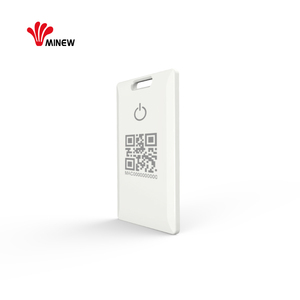Understanding RFID Proximity Sensor
The RFID proximity sensor is an innovative technological solution designed to enhance the automation and efficiency of various business processes. At its core, this device leverages Radio Frequency Identification (RFID) technology to detect and track objects or individuals within proximity. It has found widespread applications across diverse sectors, from retail to logistics, thanks to its ability to read tags without requiring direct line-of-sight with the object. This encompassment of functionality offers a seamless integration into modern operational frameworks, ensuring fast and accurate data collection.
Types of RFID Proximity Sensors
RFID proximity sensors come in various types to cater to specific needs and applications:
- Active RFID Sensors: Equipped with their own power source, these sensors continuously transmit signals and are ideal for tracking high-value assets over long distances.
- Passive RFID Sensors: These sensors do not have a built-in power source. Instead, they rely on the electromagnetic energy from the RFID reader to transmit information, making them cost-effective for short-range applications.
- Battery-Assisted Passive RFID Sensors: A hybrid between active and passive, these sensors use a small battery to enhance the reading range while maintaining a cost-effective structure.
- UHF RFID Sensors: Operating in the Ultra High Frequency band, these sensors are effective for tracking items in bulk and are widely used in supply chain management.
Applications of RFID Proximity Sensors
RFID proximity sensors have a range of applications across various industries that showcase their versatility:
- Supply Chain Management: Used for tracking shipments and managing inventory levels throughout warehouses.
- Access Control: Ideal for secure access to buildings and restricted areas, these sensors ensure only authorized personnel can enter.
- Retail Inventory Management: Assists in real-time inventory tracking, reducing loss and ensuring availability of products on shelves.
- Manufacturing: Helps monitor machinery and equipment, ensuring efficient operations and maintenance schedules.
Advantages of Using RFID Proximity Sensors
Integrating RFID proximity sensors into business operations brings numerous advantages:
- Increased Efficiency: Automating the tracking and monitoring process significantly reduces the time spent on manual tasks, allowing businesses to focus on core activities.
- Enhanced Accuracy: RFID technology minimizes human error, providing precise data for inventory and asset management.
- Cost Reduction: While initial setup costs may seem high, the long-term savings from reduced labor costs and improved efficiency make it a financially sensible choice.
- Real-Time Data Collection: Businesses can access up-to-date information on inventory levels, asset location, and access logs, aiding timely decision-making.












































































































































































































